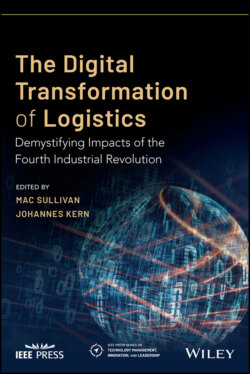Читать книгу The Digital Transformation of Logistics - Группа авторов - Страница 67
Advantages
ОглавлениеAs described in the previous section, adopting AM would create shorter, smaller, more localized supply chains (Gebler et al. 2014). This would reduce costs for holding inventory, as less safety stock is required, obsolescence rates can be reduced, and work in process would basically not exist (Atzeni and Salmi 2012; Chiu and Lin 2016; Holmström et al. 2016). Also cost for production, especially for small parts, is reported to decrease (The Economist 2012; Petrick and Simpson 2013). As costs for assembly, setup, energy, material handling, personnel, and packaging are lower, the overall costs could be reduced when compared with the conventional manufacturing (Walter et al. 2004). Therefore, small production batches, with customized designs, which also can be quickly changed, become feasible and economical (Holmström et al. 2010). Moreover, investment costs for assets such as tools, machines, or facilities could be decreased (Atzeni and Salmi 2012; Khajavi et al. 2014). And as processes are largely computer‐controlled, the required level of operator expertise could be lowered (Lipson and Kurman 2013). Employing AM reduces the time to market, especially for complex shapes, leading to increased responsiveness in the supply chain (Mellor et al. 2014; Ryan et al. 2017). Consequently, also demand fluctuations could be better managed (Chiu and Lin 2016). AM further increases flexibility, as a wide range of products can be manufactured with one process and the product mix be extended (Weller et al. 2015; Steenhuis and Pretorius 2017). In addition, sustainability benefits are predicted as resources could be used more efficiently due to improved products and production processes (Ford and Despeisse 2016). Researchers also assume that through reduced repair and refurbishment and more sustainable “socioeconomic patterns” in the form of stronger person–product affinities and a closer relationships between producers and consumers, the product life could be extended (Kohtala 2015; De la Torre et al. 2016; Ford and Despeisse 2016). Other environmental and efficiency benefits result from reduced wastage, where reports claim that it can be reduced by 90% compared with conventional manufacturing, and a more energy efficient production process4 (Singamneni et al. 2019). Another advantage of AM is that novel, complex structures, such as free‐form enclosed structures and channels, and lattices are achievable (Ford and Despeisse 2016). For example, due to stringent certification criteria, aircraft designers typically have very little design freedom, and optimizations beyond the normal would result in complex geometries that are not possible to produce with conventional methods. As AM removes such limitations, new opportunities for optimized designs are opened up (Singamneni et al. 2019). Finally, AM fosters innovation (Dwivedi et al. 2017). Customers can be involved in the innovation process, providing ideas via crowdsourcing or cocreating via open innovation platforms5 (Rayna et al. 2015). However, there are still various product‐, processing‐, and regulation‐related bottlenecks to overcome before AM can truly revolutionize manufacturing and disrupt supply chains (Verboeket and Krikke 2019).
